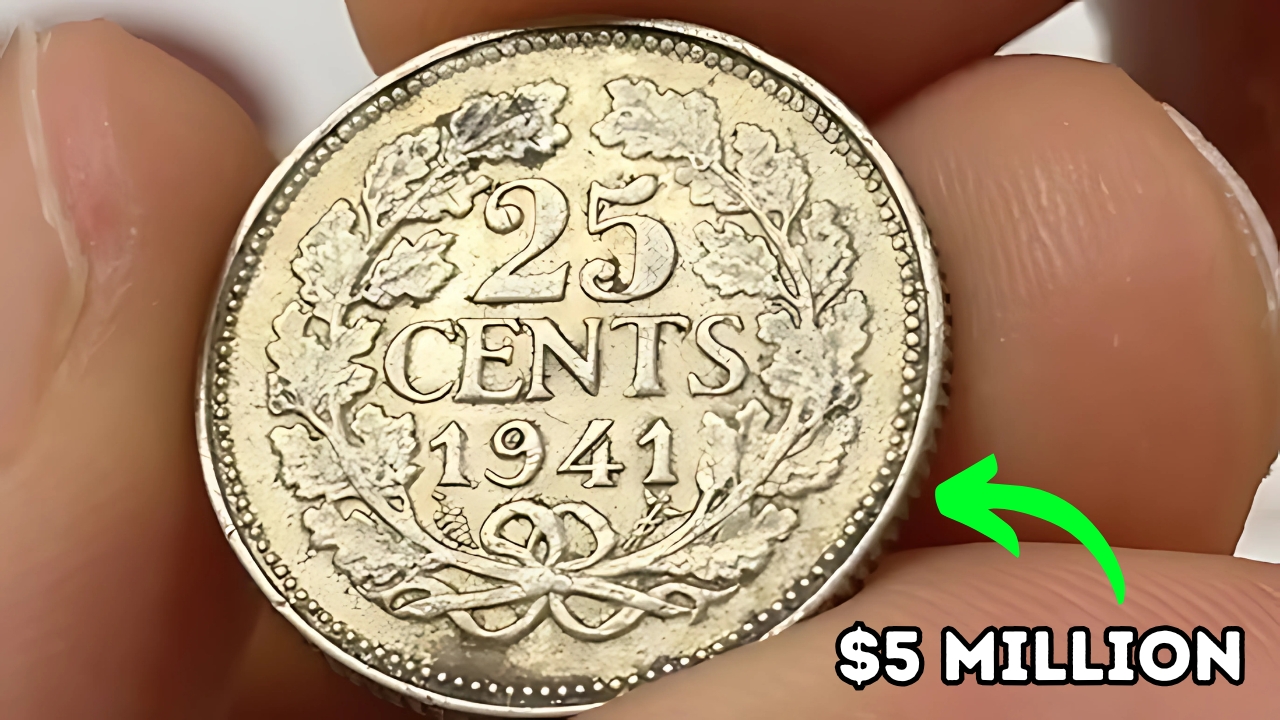Rare 25 Cent Coin : In the fascinating realm of numismatics, few thrills compare to the excitement of stumbling upon a rare coin potentially worth millions of dollars tucked away in your pocket change.
Today, we explore the captivating narrative of a 25-cent coin that could be valued at an astonishing $5 million, possibly lying unnoticed in your spare change collection.
The year 1976 marked a significant milestone—the 200th anniversary of American independence. To commemorate this important event, the U.S. Mint issued a special series of coins known as the Bicentennial coins.
Among these was the Bicentennial Quarter, showcasing a distinctive reverse design that features a Revolutionary War drummer and a victory torch, surrounded by 13 stars symbolizing the original colonies.
The $5 Million Anomaly
Although millions of Bicentennial Quarters were produced, a select few of these coins carry a rare minting error that elevates their status from a commonplace piece of change to a true numismatic treasure.
This error, referred to as a double die variety, occurs on the obverse (front) side of the coin.
What is a Double Die Error?
A double die error arises during the minting process when the die utilized to imprint the coin’s design becomes misaligned. This misalignment generates a doubling effect on specific features of the coin’s design.
In the case of the extraordinary Bicentennial Quarter, this doubling is discernible on the obverse, producing a particular and highly sought-after variant.
The Hunt for the Million-Dollar Quarter
The extreme rarity of the double die Bicentennial Quarter is what fuels its extraordinary value. Although precise numbers are not readily available, it is estimated that only a small number of these error coins circulated.
This scarcity, combined with the historical importance of the coin, has led to its estimated value surging to approximately $5 million.
How to Identify the Rare Bicentennial Quarter
If you are on the lookout for a potential windfall with a $5 million quarter, here’s what to examine:
-
Date: The coin should be marked with 1976.
-
Mint Mark: Inspect coins from every mint (Philadelphia, Denver, and San Francisco).
-
Obverse Design: Carefully scrutinize Washington’s portrait for indications of doubling, especially around the lettering and date.
-
Magnification: Utilize a magnifying glass or coin loupe to inspect the details thoroughly.
Other Valuable Quarters to Watch For
While the $5 million Bicentennial Quarter stands out as a prime collectible, there exist other valuable quarters that could be hiding in circulation:
-
1999 Delaware Spitting Horse Quarter: This state quarter features a die break that gives the appearance of the horse “spitting.” While it may not be as valuable now, it can still be sold for $10 to $20.
-
2004-D Wisconsin Extra Leaf Quarter: This coin appears in two varieties—High Leaf and Low Leaf—due to an additional leaf appearing on a corn stalk. Depending on the variety, these can hold a value from $50 to $65.
The Broader World of Rare Coins
The $5 million Bicentennial Quarter is far from the only coin attracting sky-high prices. Other notable examples include:
-
1894-S Barber Dime: With only nine known to exist, this dime is similarly valued at around $5 million.
-
1873-CC “No Arrows” Liberty Seated Dime: Another rare coin valued at roughly $5 million, with fewer than ten considered to exist.
Why Are These Coins So Valuable?
Several elements contribute to the extreme valuation of these rare coins:
-
Rarity: The limited availability of these coins makes them incredibly appealing to collectors.
-
Historical Significance: Numerous valuable coins are linked to pivotal moments in history.
-
Condition: Coins in superior condition typically fetch higher prices.
-
Errors and Varieties: Unique minting errors or variations can dramatically elevate a coin’s worth.
Could You Have One?
While uncovering a $5 million quarter in your change remains extremely unlikely, it is not entirely out of the question.
Coin collectors and enthusiasts actively seek these elusive treasures, aware that undiscovered specimens may still exist.
Conclusion
The narrative of the $5 million Bicentennial Quarter acts as a reminder that remarkable value can occasionally be hidden within the most ordinary objects.
Although most individuals might not accidentally find a million-dollar coin, the prospect adds an element of thrill to the humble task of sorting through change.
Who knows? The next quarter you receive could indeed be your ticket to a numismatic windfall.
If you believe you have discovered a rare and valuable coin, it is crucial to have it evaluated and authenticated by a professional.
The realm of rare coins is intricate, and expert guidance is vital in establishing a coin’s genuine value and authenticity.
So, next time you receive change, take a moment to inspect it closely. You may very well be holding a historical artifact—and a potential fortune—in your hand.
